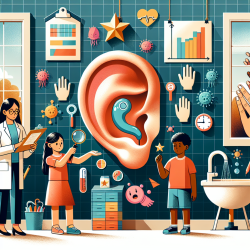Introduction
In the ever-evolving field of speech-language pathology, staying informed about the latest research is crucial for practitioners aiming to provide the best outcomes for their clients. A recent meta-analysis titled Pure Tone Audiometry and Hearing Loss in Alzheimer's Disease offers valuable insights into the relationship between hearing loss and Alzheimer's Disease (AD), a condition affecting millions worldwide. This blog will explore the findings of this study and discuss how practitioners can leverage this knowledge to enhance their practice.
The Link Between Hearing Loss and Alzheimer's Disease
The meta-analysis reviewed 248 studies, ultimately including six that met stringent criteria. The findings revealed a significant increase in hearing thresholds in individuals with AD compared to age-matched controls. Specifically, the study found a 2.3 decibel hearing level (dB HL) increase for a three-frequency pure tone average (500–1,000–2,000 Hz) and a 4.5 dB HL increase for a four-frequency average (500–1,000–2,000–4,000 Hz). These results underscore the importance of recognizing hearing loss as a potential early indicator of AD.
Implications for Practitioners
For practitioners, these findings highlight the need for routine hearing assessments in older adults, especially those at risk for or diagnosed with AD. By incorporating pure tone audiometry into regular evaluations, speech-language pathologists can better identify hearing impairments that may contribute to cognitive decline. This proactive approach not only aids in early diagnosis but also opens avenues for interventions that could slow the progression of AD.
Encouraging Further Research
While the meta-analysis provides a comprehensive overview, it also points to the need for further research. Practitioners are encouraged to explore the interplay between peripheral and central auditory processing in AD. Understanding these dynamics could lead to more targeted therapies that address both hearing loss and cognitive decline.
Conclusion
In conclusion, the meta-analysis on pure tone audiometry and hearing loss in Alzheimer's Disease offers critical insights that can enhance the practice of speech-language pathologists. By integrating these findings into their work, practitioners can contribute to better outcomes for individuals with AD. For those interested in delving deeper into the research, the original paper can be accessed here.










